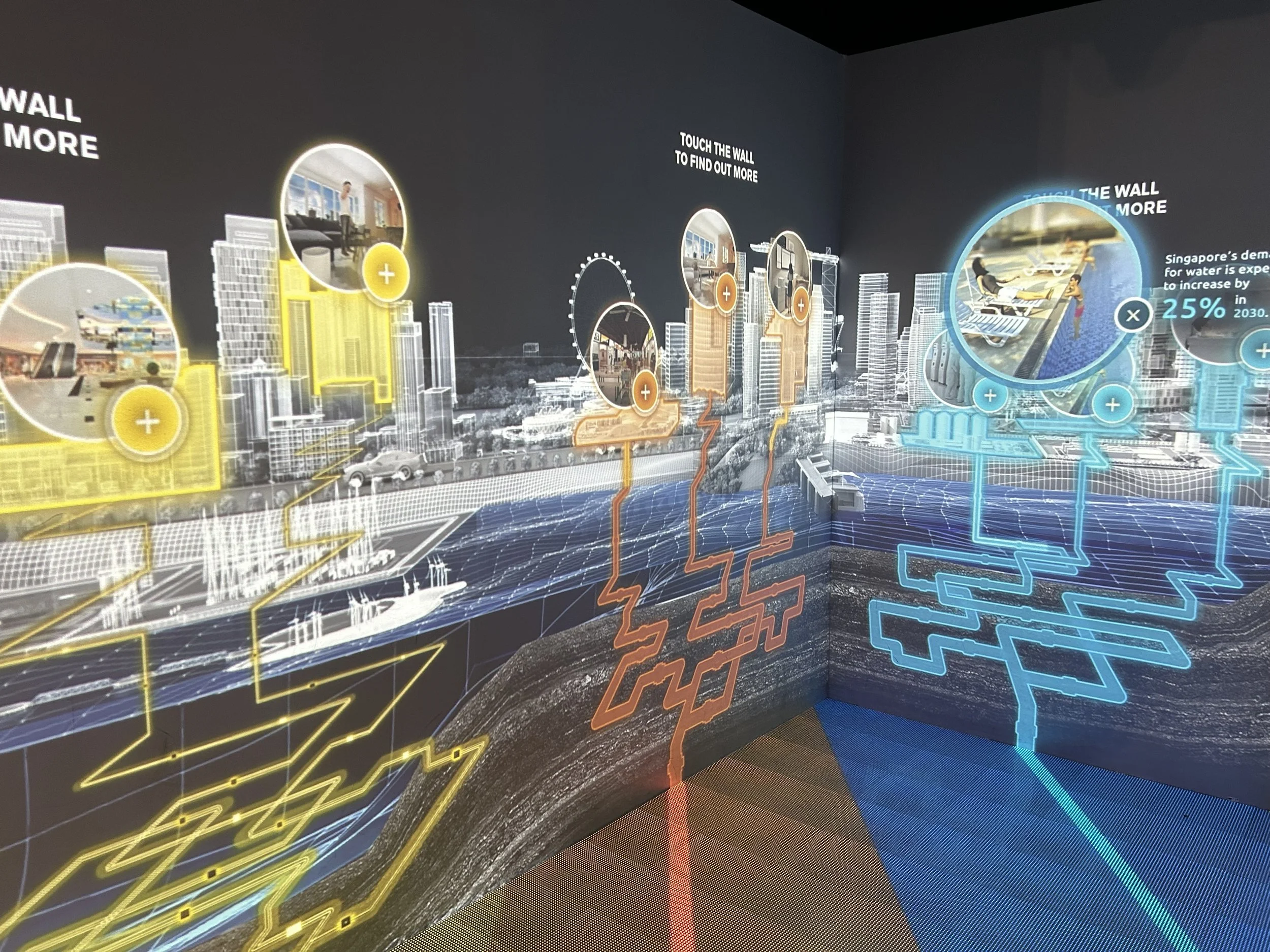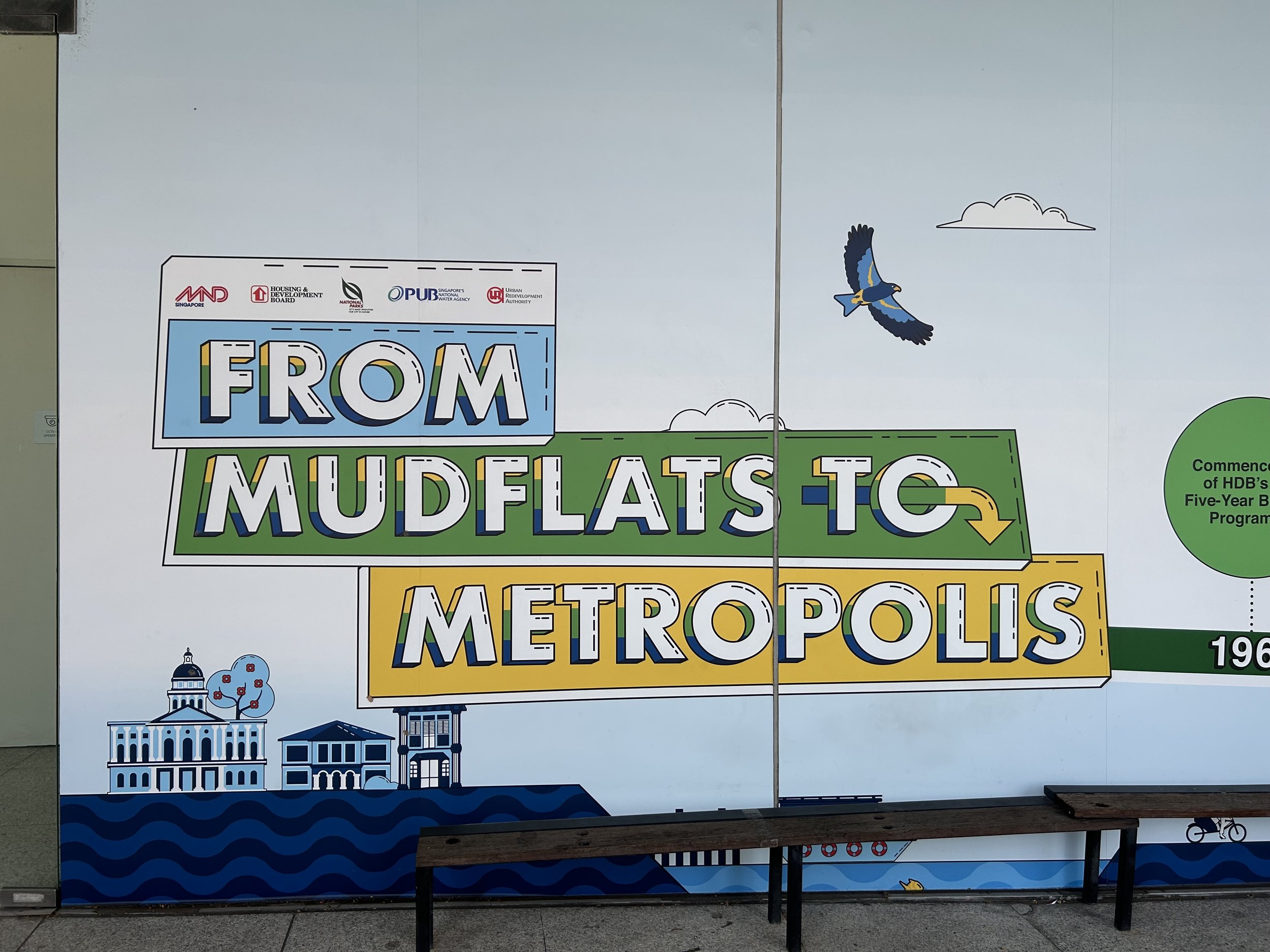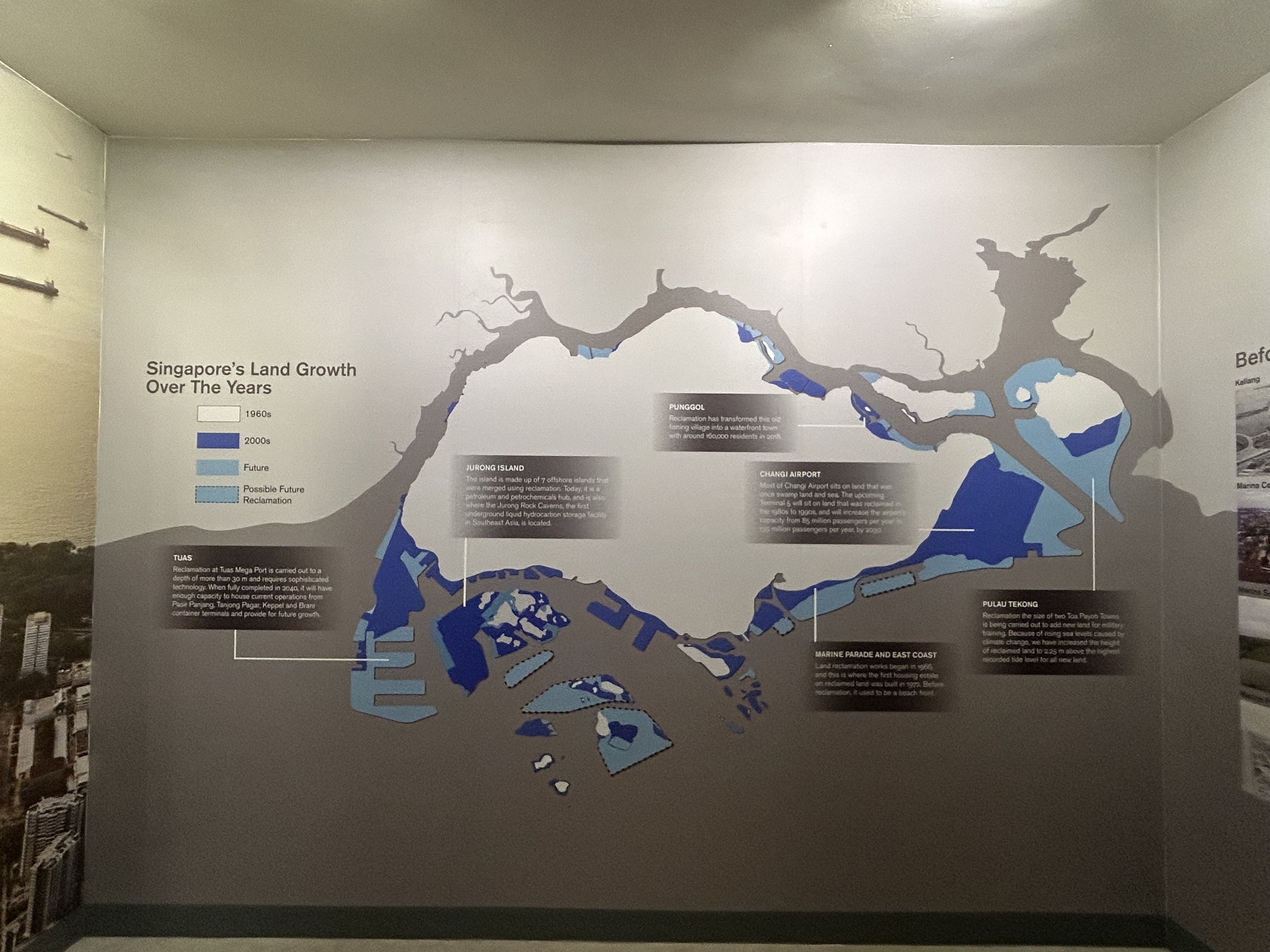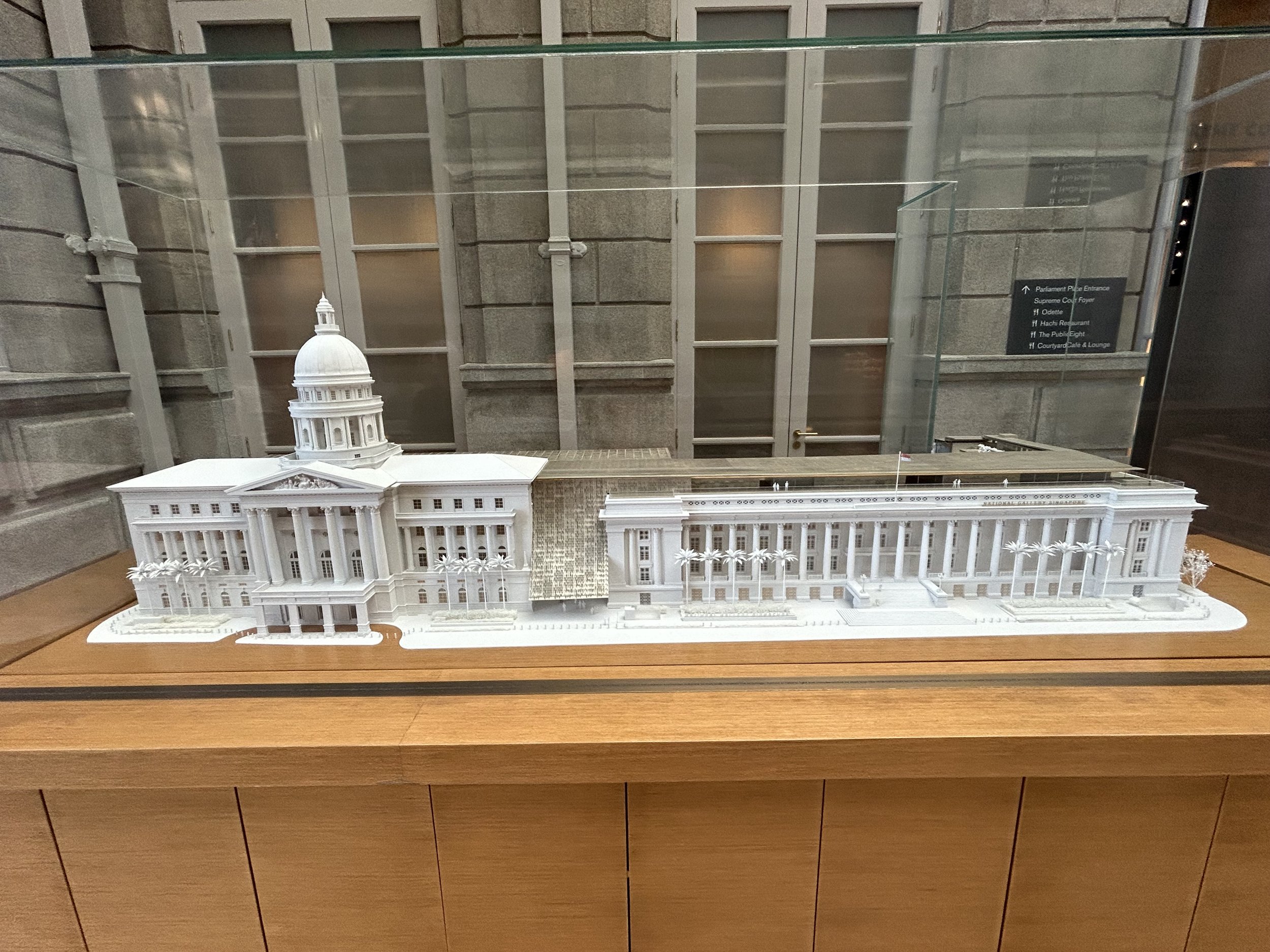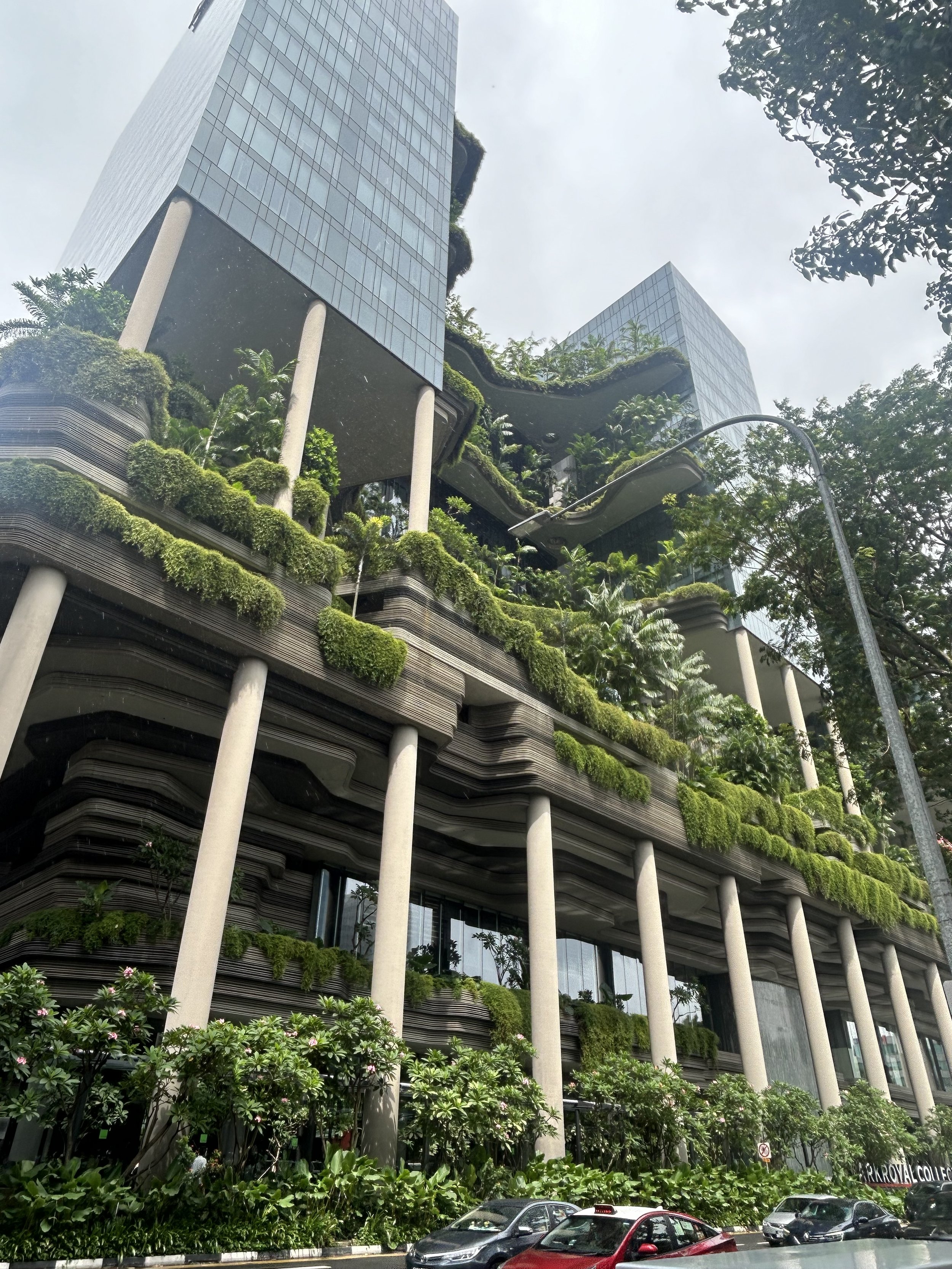It is impossible to evaluate a place after a short visit of a few days… I fear doing so for a place I know well let alone ones I am unfamiliar with :-) However, I am going to use the framework as a lens for thinking about the places we are visiting while travelling. I am hoping it will cause me to think about things I might not otherwise do, and find lessons to take forward. I would enjoy hearing your thoughts :-)
How does Singapore bring the story of place to life?
This is a particularly difficult one to answer when i do not know this place and what its story that needs to brought to life is… To try to learn more about this we went to the National Museum of Singapore to read of its history, the amazing Urban Redevelopment Authority (URA) which goes into great detail about the development of this city and the Singapore Botanic Gardens which provides one of its amazing green lungs and history on its plants. While there was a lot about the development that has occurred, especially over the last 200 hundred years, and the important role design has played here, there was not a lot about the original custodians of the land and their ways or knowing, being and doing, or the natural history other than it being a place on the river of an island at the end of the Malay peninsula in a sea with many other islands… and that development had helped change it from “mudflats to metropolis”… It is clearly a multicultural city at the heart of many crossroads of Asia that has its heart set on being a smart city that benefits all its citizens, now and into the future. So - how does it:
centre Country in design?
I think this is the area I am most unsure about. I don’t think Country is centred in design - rather people and their needs are centred in design and Country is shaped to accommodate these needs. The ‘swamps’ have been filled with mountains that have been cut down and fill from other natural places; the mouth of the river barraged to separate salty and fresh water; and a number of other interventions. It seems that these have been done to make sure Singapore is able to expand and accommodate its growling population and desire to be a leading business, manufacturing and tourism destination. In my very brief time I was not able to find information on how well Country has been considered in this development, or how it will survive or thrive in the future. Can Country be centred in design when cities are expanding? Or maybe a better question is - how can these approaches be shaped by centring Country in design? What would a city be like if we did centre Country/nature rather than humans?
From the Singapore Urban Redevelopment Authority (URA) external panels
From the extensive internal URA exhibition
enhance its context, connections and culture?
Singapore has been enriched with designs based on its context as an island at the end of a peninsular in a rich archipelago of islands, enjoying a position at the crossroads of many cultures in Asia and the connections that are essential for it to thrive. Particularly in the last half century, the development of housing for all its people, has been planned around good infrastructure and the facilities of 15 minute cities (before they were a thing!). Additionally, this has been extended to include enhancement of its garden context, connections and culture.
The focus on consumption and tourism is interesting from a sustainability perspective - while it might be ‘good’ for Singapore, is it really? and is it good for the world?
positively contribute to its watershed?
Proving good water for its 6.053million people is seen as critical for the city’s success, and much work has been put into securing good water storage and treatment. How does this impact the natural watershed and the many other species that rely on it? I am not sure, and as with Country, this natural system probably needs more of a voice in decisions…
How does Singapore celebrate resourcefulness?
Clearly, Singapore is a place that seems to do a lot with all that it has. With a rich cultural history and some pretty tricky times over the twentieth century, it is firmly focused on how it can be a leader in the twenty first century. Design is one of the foci it has decided to back, with apparent success. However, at the same time it does appear to be a city of great consumption. How does it:
achieve net zero carbon in its life cycle?
As with many places in the world, there has been an increasing focus on energy/carbon efficiency in the operation of buildings. The hot humid climate of Singapore makes this very hard to deliver on, especially when rooms, corridors and lifts are cooled to very low temperatures, and there are few opening windows. The embracing of open garden spaces within buildings, such as the totally open entry area on L12 to our hotel, makes me think there is reason for optimism.
The focus on embodied carbon is something that we are all now beginning to understand the importance of, and how important design is in reducing this. To date, Singapore has used huge amounts of steel and concrete many reasons, not least durability. It is good to see the increasing use of bio materials.
Renewable energy is a big issue. With little scope of making their own, there are great hopes for this to come from Australia via the promised underwater cables :-) Not sure what the Plan B is…
incorporate lean design for optimal resource use?
As I floated in the pool under the massive steel framed crown on the Oasia hotel, I wondered about its embodied carbon… Questions such as - was this necessary? If so (which one could argue it was to some degree), how could its embodied carbon be reduced? Could it be half the height? Could it be built from another material - bamboo or timber? How can we realise beauty while doing good?
There is a really strong focus on prefab construction and using materials requiring as little human work as possible - such as brickwork. I was not able to get to the bottom of this and do not understand the details…
balance economic measures of cost and value?
Singapore does seem to be a country that places long term value at the heart of every decision, particularly the investment in infrastructure and housing for the benefit of all its citizens - something I was most impressed with.
How does Singapore enable communities to thrive?
Singapore does seem to be a thriving place, with lots of diverse people living, working, learning and visiting. It does seem that the government is interested in ensuring Singaporeans are not disadvantaged as the popularity grows (various tax incentives with cars and homes for example), but I don’t think I can answer this well after such a short visit.
The inclusion of significant amounts of green space in all developments, the design for active transport rather than cars and strong local centres for all communities all seem to be good. Are they working? How do people cope with the very high density of living? I am not sure what the stats are on this are so feel unable to answer the following dot points with any certainty. I have included a couple of comments.
improve the communities physical and psychological health and well-being?
Lots of green space seems to be very well used and appreciated.
provide equitable and affordable access and resources to diverse communities?
There are many diverse communities evident in town, and seem to be well supported in facilities and inclusion.
empower community members to realise their potential and flourish?
This does seem to be a place where many people come to work and succeed.
How does Singapore foster ‘long now’ thinking of good ancestors?
With a long history of many cultures coming and taking over the place, there are many cultures and ancestors to build on :-) The previous modernisation of Singapore, that seemed to prioritise new buildings over anything old seems to have slowed, with a number of existing heritage buildings and places being kept and upgraded. Again, hard to comment in such a short time, but I include the following observations:
respect and value existing communities and buildings?
There were a number of examples of existing buildings with their heritage and value being respected more recently, such as the National Gallery, National Museum, China town, many religious buildings and others.
Model of the National Gallery, cleverly incorporating 2 important heritage buildings
enable future communities to endure and adapt to changing climates and needs?
I am not sure how Singapore, which is likely to see climate change hitting hard with increased storms, temperatures, humidity, and sea levels, is preparing for these possible futures… Or how they are contributing to abating these changes…
regenerate resources as we use them?
I think this is an area that Singapore struggles with as there is such little land area. Giving 1/3 over to the military might not help… However, there does seem to be much room for improvement on the food front and circular economy areas.
How does Singapore inspire and enable capacity and agency?
Singapore does seem to be a really inspiring place, that is telling its good stories really well and attracting lots of people. Again, I would like more time to be able to answer this properly :-) A couple of comments on the following dot points:
help us understand and want to be in relation with and care for Country?
the strong focus on Singapore as a “biophilic city in a garden” seems to be going a long way in making this happen. i am not sure how this sits with the continuing land filling exercises and shaping of Country for people’s benefits…
WOHA’s ParkRoyal on Pickering
support and promote healthy and fair supply chains?
Not sure about this - most of the supply chains come from afar, and they seem to be more about taking what comes. I am not sure how the power of their demands in shaping better outcomes is being exercised.
inspire with stories that help us and others in our work?
We heard many inspiring and great stories while we were there. While I am sure much more can be done, we were so impressed that the major issues of housing and equitable access seem to have been successfully addressed - unlike many other places in the world.

